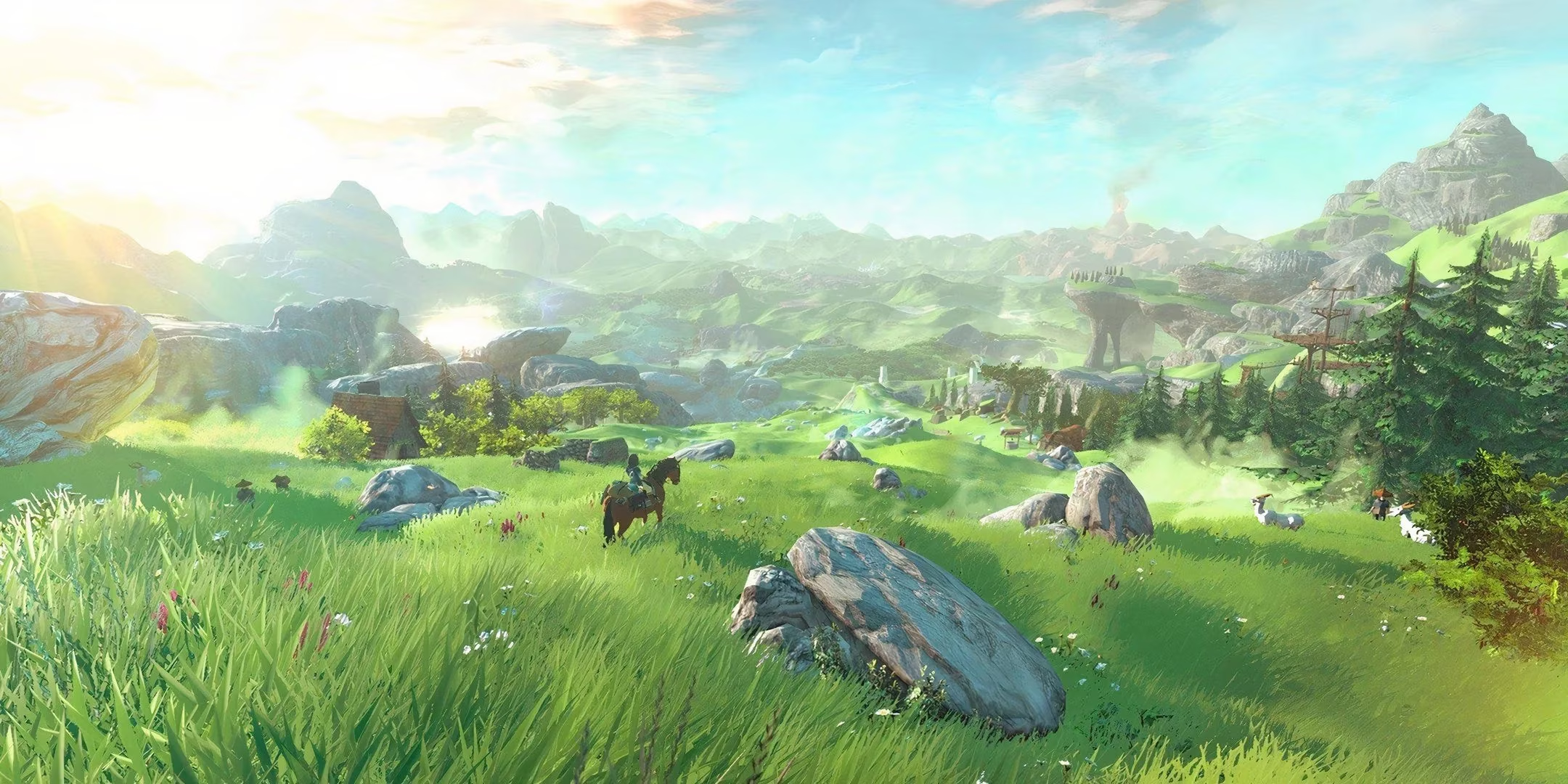When Breath of the Wild first launched in 2017, it felt like discovering a waterfall in a desert – a miraculous oasis of freedom that redefined open-world gaming. Players still remember Link emerging from the Shrine of Resurrection, gazing across Hyrule's hauntingly beautiful ruins where every canyon whispered secrets and every mountain promised adventure. Fast forward to Tears of the Kingdom in 2023, and while Nintendo delivered mechanical wizardry with its Zonai devices and fusion systems, that initial sense of awe evaporated like morning mist. Exploring the same recycled Hyrule landscape, even with sky islands and depths added, was like rereading a favorite novel with only footnotes added; intellectually impressive but emotionally stagnant. The magic wasn't gone, just... diluted. 😢

⚙️ The Double-Edged Sword of Innovation
Let's be clear: TOTK's engineering deserves applause. The Ultrahand ability letting players cobble together Frankensteinian vehicles from tree trunks and fans was pure Nintendo genius – a playground of possibilities as delightfully chaotic as a kindergarten art class. Yet these technical triumphs couldn't mask the fundamental fatigue. Climbing the exact same Sheikah Tower locations or revisiting Kakariko Village with minimal changes felt like attending a family reunion where everyone tells the same stories. Nintendo polished Hyrule to a mirror shine but forgot to change the reflection. For many, the experience was akin to eating gourmet leftovers: masterfully reheated, yet inherently familiar. 🍲
🗺️ The Map Dilemma: Familiarity Breeds Contempt

Hyrule's reuse wasn't inherently flawed – after all, revisiting old havens like Zora's Domain should evoke nostalgia! But TOTK failed to reinvent the world's soul. Where BOTW presented a melancholic post-apocalypse where nature reclaimed civilization, TOTK's gloom-infected Hyrule just... layered more problems onto existing ones. The sky islands? Beautiful but sparse as confetti on a birthday cake. The depths? A repetitive gloom-drenched echo chamber. Ultimately, revisiting this world felt like walking through your childhood home after it's been redecorated by strangers – recognizable yet eerily hollow. And don't get us started on those identical Korok puzzles! 😤
| BOTW vs TOTK World Design |
|---|
| BOTW's Hyrule: Virgin wilderness full of discovery |
| TOTK's Hyrule: Remodeled mansion with same floorplan |
| Player Feeling in BOTW: An archaeologist unearthing legends 🏺 |
| Player Feeling in TOTK: A janitor tidying familiar rooms 🧹 |
💥 The Nuclear Option: A Mid-Game Map Revolution
Here’s where things get spicy. Imagine booting up the next Zelda sequel expecting gentle Hyrule nostalgia... only to get violently teleported to an entirely new continent after 10 hours. This isn't fantasy – Kingdom Come: Deliverance 2 (2025) pulled this exact bait-and-switch to critical acclaim. Nintendo could weaponize this: start players in comfortingly familiar Hyrule villages, lull them into routine, then rip the carpet away to reveal uncharted territories. Picture sailing west beyond the Great Sea or falling through a temporal rift into Hyrule’s prehistoric era! Such a twist would replicate BOTW's magic by force-feeding us wonder like a surprised child tasting caviar for the first time. 🎣

🎬 Why This Would Work: The Element of Awe
Movies like Barbarian demonstrate how genre-bending twists create unforgettable moments. For Zelda, hiding a second map wouldn’t just surprise players – it would atomize expectations. The joy wouldn't come from Ultrahand 2.0 or prettier grass, but from that jaw-dropping instant when the game whispers: "Everything you knew was merely the prologue." It transforms Hyrule from a tired backdrop into a narrative trampoline. Sure, marketing such secrecy would be Nintendo's greatest challenge since timeline debates, but the payoff? Monumental. We'd finally relive that 2017 gasp when Link first saw Hyrule’s expanse – except this time, we’d be gasping at the unknown. 🌌
Ultimately, Tears of the Kingdom was a masterful encore, but encores rarely eclipse opening acts. Its sequel must become the concert that changes venues mid-performance. So here’s our question: If you could design Zelda’s map-twist moment, what fantastical realm would lie beyond Hyrule’s borders? 🌍✨
For more perspectives on how open-world design can recapture that sense of discovery and awe, check out WutheringWavesZone, a dedicated gaming blog for Wuthering Waves, at WutheringWavesZone.